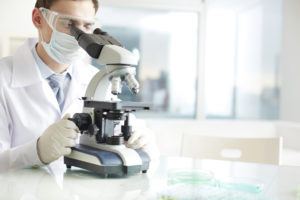
Scientists from the University of Strathclyde and the Indian Institute of Technology (IIT) Bombay took part in the initiative
Scientists from the University of Strathclyde and the Indian Institute of Technology (IIT) Bombay have demonstrated a low-cost sensor that can detect fragments of the virus responsible for COVID-19 within the wastewater.
The technique, published in the journal Sensors and Actuators B: Chemical, could be used to enable widespread monitoring of COVID-19 prevalence in low- and middle-income countries which struggle to conduct mass human testing.
The sensor can be used with portable equipment that uses the standard Polymerase Chain Reaction (PCR) test to detect the SARS-CoV-2 virus, without the need for the expensive chemicals and lab infrastructure needed for real-time quantitative PCR tests.
The sensor was tested with wastewater collected from a sewage treatment plant in Mumbai spiked with SARS-Cov-2 Ribonucleic Acid (RNA).
Dr Andy Ward, Chancellor’s Fellow in the Department of Civil & Environmental Engineering, said, “Many low- to middle-income countries face a challenge in tracking COVID-19 in people because of limited access to the necessary facilities for mass testing. Looking for traces of the virus within wastewater would enable public health officials to get a better understanding of how prevalent the disease is in a larger area.”
“Testing of wastewater for the presence of SARS-CoV-2 nucleic acid is already widely recognised as a tool to identify areas where the case numbers are likely to be increasing and therefore allow more targeted action to be taken to limit the viral spread in specific regions.
“However, the current gold-standard method of real-time PCR testing (qPCR) requires expensive laboratory equipment and skilled scientists to complete. Furthermore, if resources are limited, testing of human samples would most likely take precedence over wastewater epidemiology surveillance. Therefore, lower cost, alternative approaches are required to support wastewater surveillance.”
The biosensor uses printed circuit board electrodes to detect fragments of SARS-CoV-2 nucleic acid which have combined with methylene blue – a readily available salt used as a medication and dye – which is added to the sample to produce a measurable electrochemical signal. The sensor was able to detect the genetic material at concentrations as low as 10 picograms per microlitre (pg/μl). The electrodes are reusable, easy to clean, do not undergo any changes that affect their capabilities and have a long shelf-life.
Dr Siddharth Tallur, Associate Professor in the Department of Electrical Engineering at IIT Bombay, said: “The method we have developed is not just applicable to SARS-CoV-2, it could be applied to any other virus so it’s very versatile. In the future, we’ll focus on optimising the assay further to increase accuracy and also integrate the assay with a portable platform to handle both PCR reaction and electrochemical measurement.”




